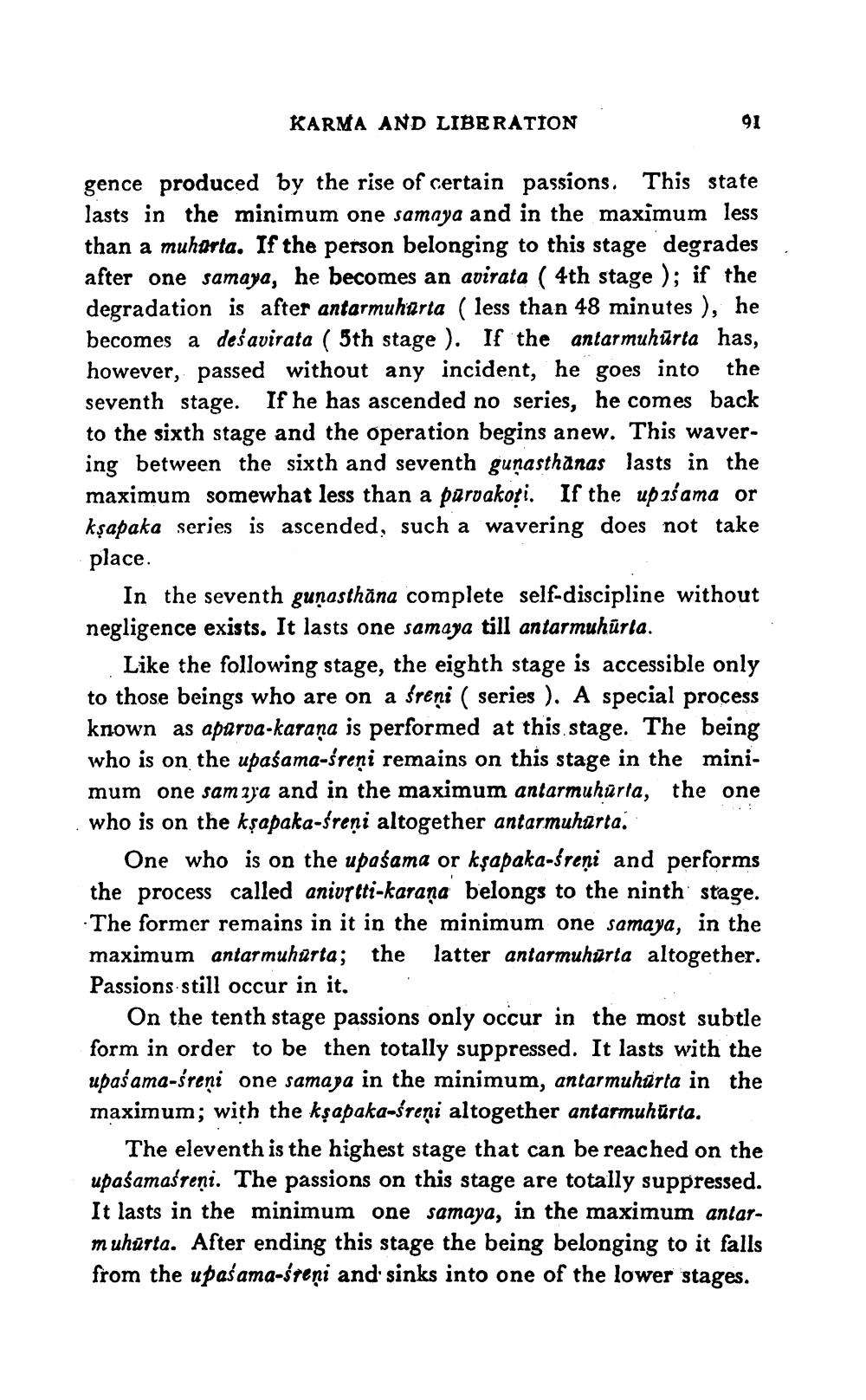________________
KARMA AND LIBERATION
91
gence produced by the rise of certain passions. This state lasts in the minimum one samaya and in the maximum less than a muharta. If the person belonging to this stage degrades after one samaya, he becomes an avirata (4th stage); if the degradation is after antarmuhurta (less than 48 minutes), he becomes a deśavirata ( 5th stage). If the antarmuhurta has, however, passed without any incident, he goes into the seventh stage. If he has ascended no series, he comes back to the sixth stage and the operation begins anew. This wavering between the sixth and seventh guṇasthānas lasts in the maximum somewhat less than a purvakoti. If the upasama or kṣapaka series is ascended, such a wavering does not take place.
In the seventh gunasthana complete self-discipline without negligence exists. It lasts one samaya till antarmuhūrta.
Like the following stage, the eighth stage is accessible only to those beings who are on a śreni ( series). A special process known as aparva-karana is performed at this stage. The being who is on the upasama-śreņi remains on this stage in the minimum one samaya and in the maximum antarmuhurta, the one who is on the kṣapaka-śreņi altogether antarmuharta.
One who is on the upasama or kşapaka-śreņi and performs the process called anivrtti-karana belongs to the ninth stage. The former remains in it in the minimum one samaya, in the maximum antar muhurta; the latter antarmuhurta altogether. Passions still occur in it.
On the tenth stage passions only occur in the most subtle form in order to be then totally suppressed. It lasts with the upasama-śreņi one samaya in the minimum, antarmuhurta in the maximum; with the kṣapaka-śreni altogether antarmuhurta.
The eleventh is the highest stage that can be reached on the upaśamasreni. The passions on this stage are totally suppressed. It lasts in the minimum one samaya, in the maximum antarmuhurta. After ending this stage the being belonging to it falls from the upasama-śreņi and sinks into one of the lower stages.




